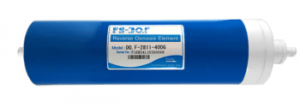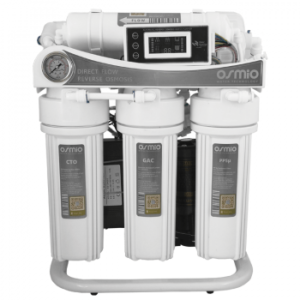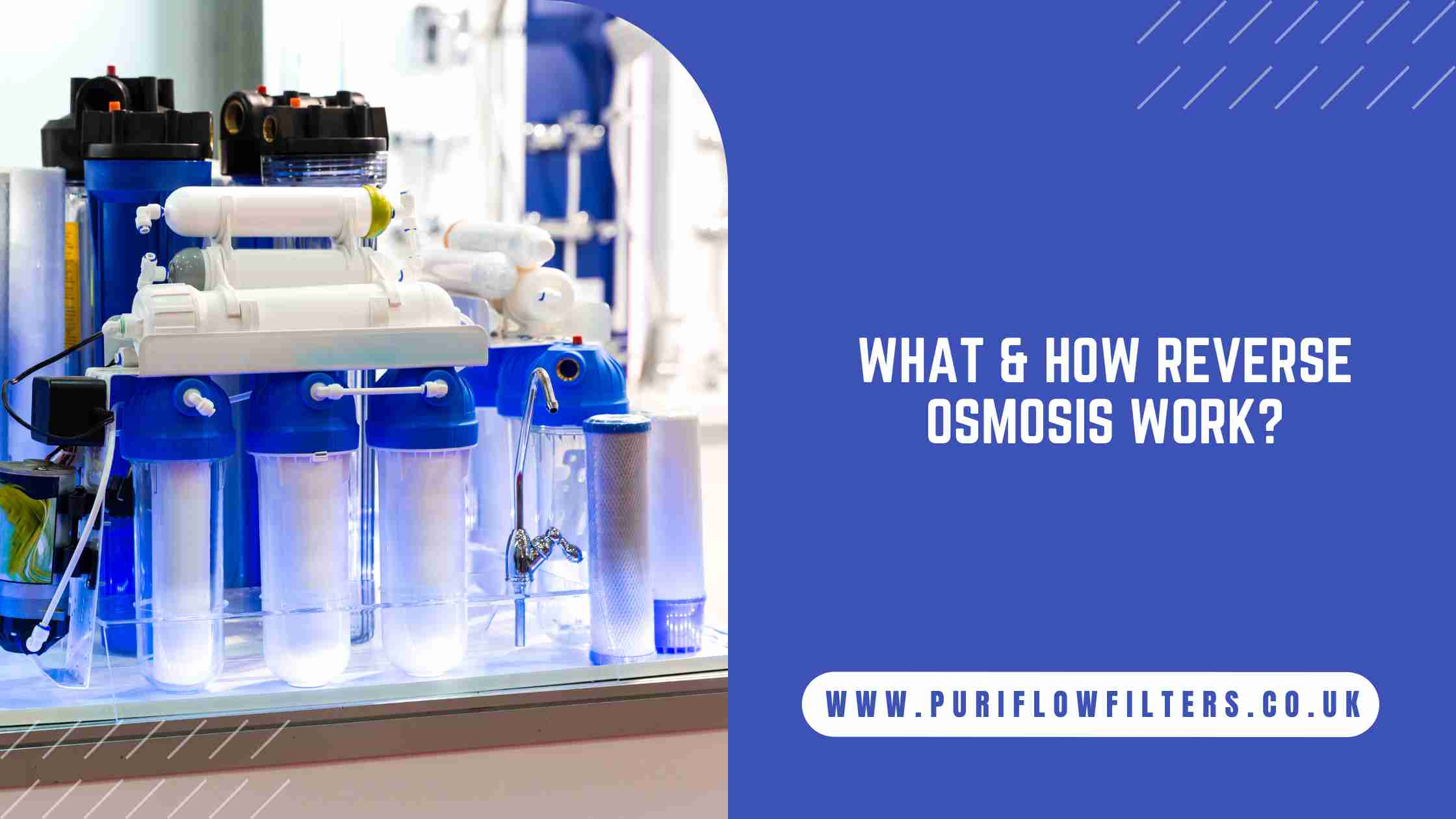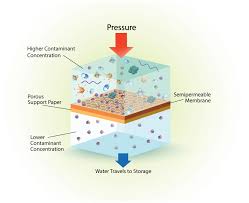A Reverse Osmosis Water Filter provides the most comprehensive filtration available for home use, but what does it do and how?
What is Reverse Osmosis?
Reverse osmosis is one of the most reliable and effective filtration methods for home drinking water , giving consistently high removal rates and providing total peace of mind.
At the heart of a reverse osmosis water filter is the membrane which is semi-permeable with pore size of approximately 0.0001 microns which effectively only allows the water molecules through and prevents any larger molecules of from passing through. A vast range of contaminants such as heavy metals, fluoride, chlorine VOCs organic materials or even viruses are prevented from entry
The Stages Of A Reverse Osmosis Water Filter:
Reverse osmosis water filters vary greatly in sophistication and quality. Whilst the RO membrane is the most essential component, to provide the best quality water, other filters are normally included
Stage 1: Sediment Prefilter
This is the first stage of the reverse osmosis filtration process, the sediment prefilter is used to filter out the dirt, dust, sand and debris among others. It can screen out 15 times more microscopic particles than a sand grain.
Stage 2: A Carbon Prefilter
Once the first stage is complete, the second stage starts. Here, the carbon prefilter is used by the best reverse osmosis water filter for home use. The pre-filter is used to enhance the taste and smell of water. In some water filters employ a 2nd carbon prefilter .
Stage 3: Reverse Osmosis Membrane
This is the stage when the semi permeable membrane filters out various dissolved solids and remove contaminants effectively. However, even the best reverse osmosis filter will not always remove 100% of everything. For example fluoride removal rates are normally around 94-97%, certainly representing a huge reduction.
Stage 4: Polishing Filter

This is the last stage of the water filtration process in a reverse osmosis water filter. Here, then a secondary activated carbon filter is often employed. This filter helps to make the water crystal clear for drinking.
Our advanced Osmio HT+ Home & Office Reverse Osmosis filter utilises the following filter configuration:
1) 5-Micron Sediment Filter
2) GAC Carbon Filter
3) CTO Carbon Block
4) 400 GPD Reverse Osmosis Membrane
5) Antibacterial Water Filter. This 5th Filter has antibacterial silver-impregnated calcium and magnesium and carbon

Flow Rate
We sometimes get asked for a reverse osmosis system for the whole house. The undercounter reverse osmosis water filter systems sold for homes are not capable of such flow rates as would be required for whole house filtration and are suitable only as a source of purified drinking water. They are normally supplied with a separate drinking water faucet but may also be connected to a three way filter tap.
There are RO systems which can produce far higher rates of flow but these are industrial sized units which would be unsuitable for most homes. In these situations we would recommend installing a good whole house filter and then a reverse osmosis filter for the drinking water thereby providing the most comprehensive filtration of your household water available.
Tank or direct flow?
Traditionally, once the purified water has exited the filter system it is stored in a small tank from which it is drawn via the filter tap. However there are a number of issues with this, notably the need to regularly sanitise the tank and also the large amount of waste water produced by such systems.
Today the trend is away from tank use to direct flow in which the purified water is produced on demand. This has the advantage of space saving, providing freshly filtered water, eliminating or reducing the need for frequent santising and giving a significant saving on waste water.
Are there any disadvantages with a Reverse Osmosis Water Filter?
The most commonly cited issue with RO water is that it is too pure, beneficial compounds containing calcuim and magnesium being removed just as effectively as contaminants and resulting in drinking water which is on the acidic side. This is a legitimate concern and is addressed in the better systems by the inclusion of a re-mineralising cartridge in the final stage.
In conclusion we can say with confidence that installing a home reverse osmosis water filter will provide your family with the safest, healthiest drinking water possible and give lasting peace of mind







